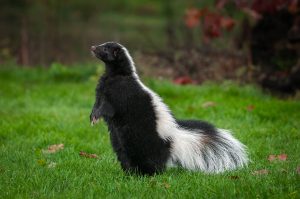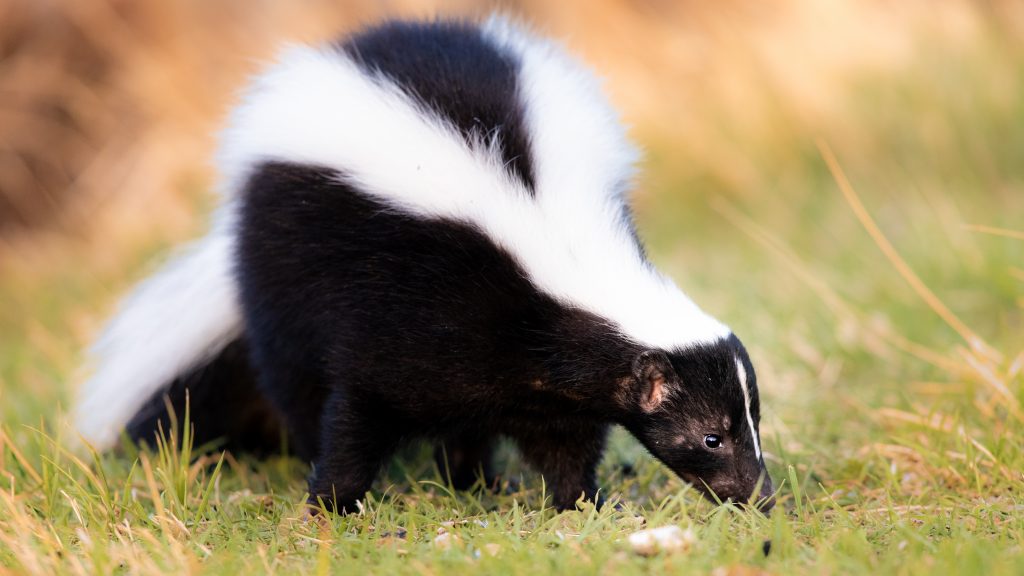Most people consider skunks highly aggressive. This is not the case. They are very calm animals that will warn aggressors multiple times before spraying them. They will stop their feet, curve their tail up to notify you it will spray and it will growl at you. It is hard to miss and if you leave right away the skunk will not spray you. The reason skunks have this spray is a defensive method of getting rid of predators without having to physically fight anything. They will spray a predator who will generally run away and then their distinctive markings will warn that same predator away from all skunks. This gives skunks the ability to breed and hunt without fear of predation.
Skunks spray comes from two small glands in the skunk’s anus. They can open and spray a stream of yellow oil up to fifteen feet away. Their aim is very good as the weapon is a natural part of their body. Controlling it is second nature so they will never miss their mark. The chemical they spray is a yellow oil called thiols, this chemical latches on to the skin and diffuse rapidly to give off a horrifying smell. Along with thioacetates which break down into thiols when touched by water. The oils do not respond to water and soap so cleaning it off with a shower will not work. The oils when wet will actually smell worse. The oil is produced by the sacks but a skunk can actually run out of the spray. Generally, they will try as hard as possible to ward off the predator because if another one shows up before the oil is replenished the skunk is as good as dead.

In the wild skunks will live in something called a den. It can be a dug holes, a hollow log, a tree stump or opening in a tree or even in an abandoned building. They also enjoy rock piles, caves and woodpiles so be careful if you heat your home with wood as skunks will try to nest in it over the winter. If the animal comes onto your property to nest for the winter it will likely go under your deck or into a garden shed, they are not great climbers so they cannot generally access an attic without some help reaching it. They can burrow very well however so living in your crawl space is a common event. Always be careful when entering a dirt floor basement or crawl space and always inspect the outside of your home for signs of burrowing or infiltration by wild animals.
Skunks are, like raccoons, opportunistic omnivores. They can eat anything that can be considered food from rotting meat to fruits vegetables and nuts, they love the eggs of birds and they love eating mice, small birds when they can catch them and even rabbits. They will often select a place to nest based on access to said food. So if you have a garden or open garbage then you may have a skunk on your property. Skunks mate in the springtime and the females give birth about two months later in the early summer. As per most wildlife, the males do not take part in raising or rearing their young and will instead leave and do their own thing. The babies get weaned from the mother’s milk at about two months old and leave their mother at about six to twelve months, often becoming adults before the wintertime.

